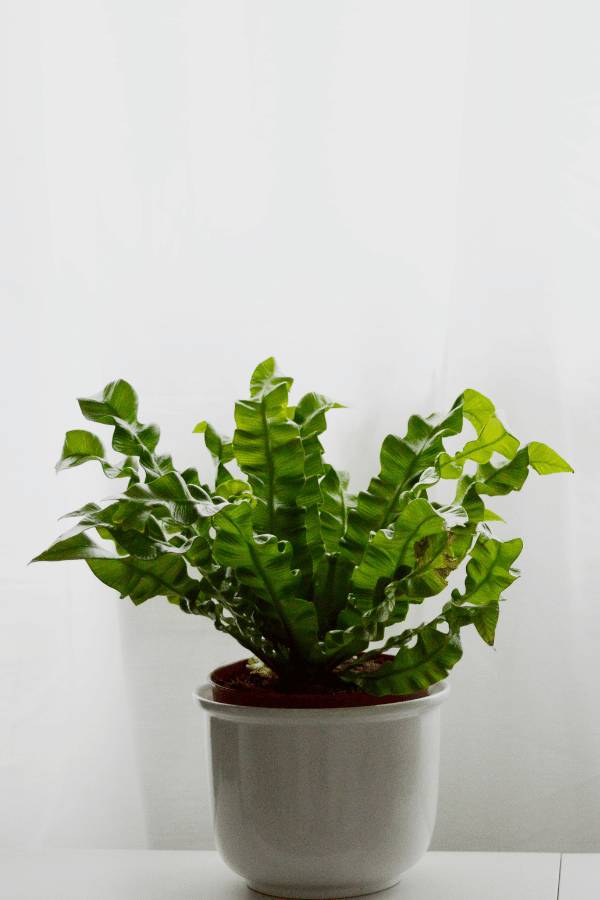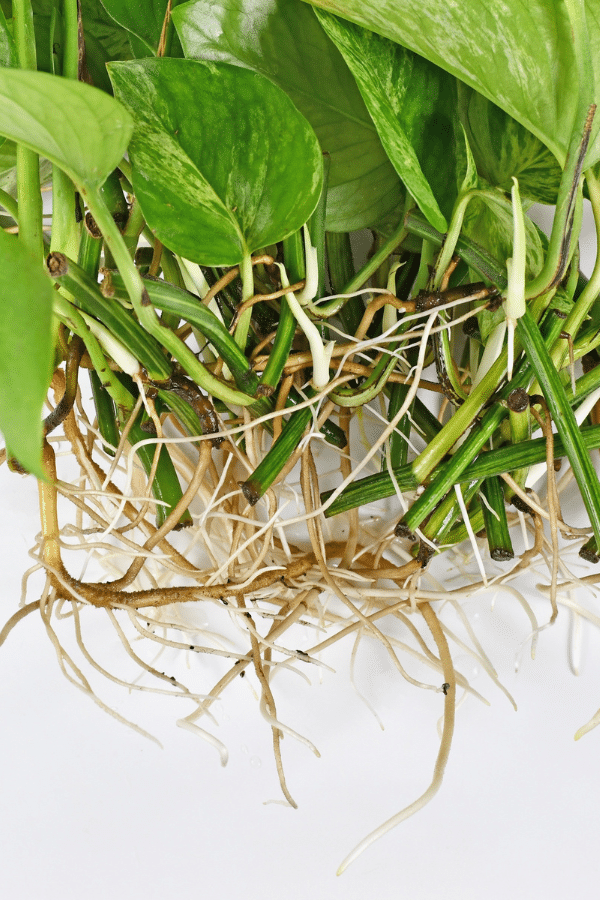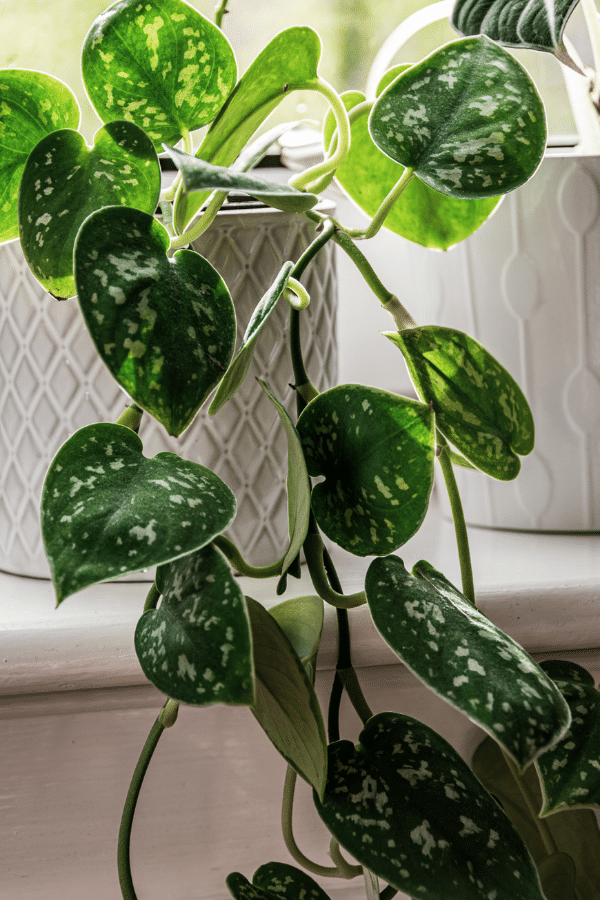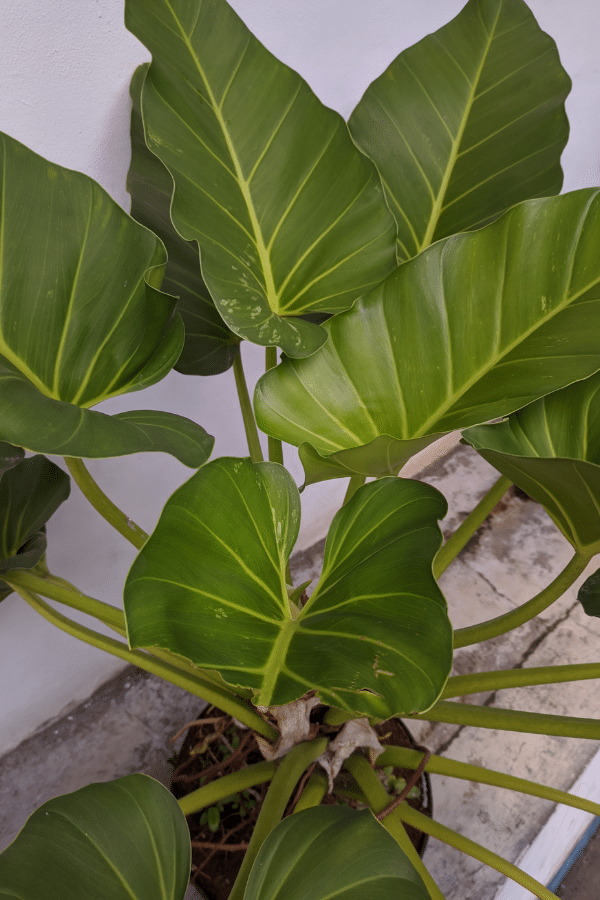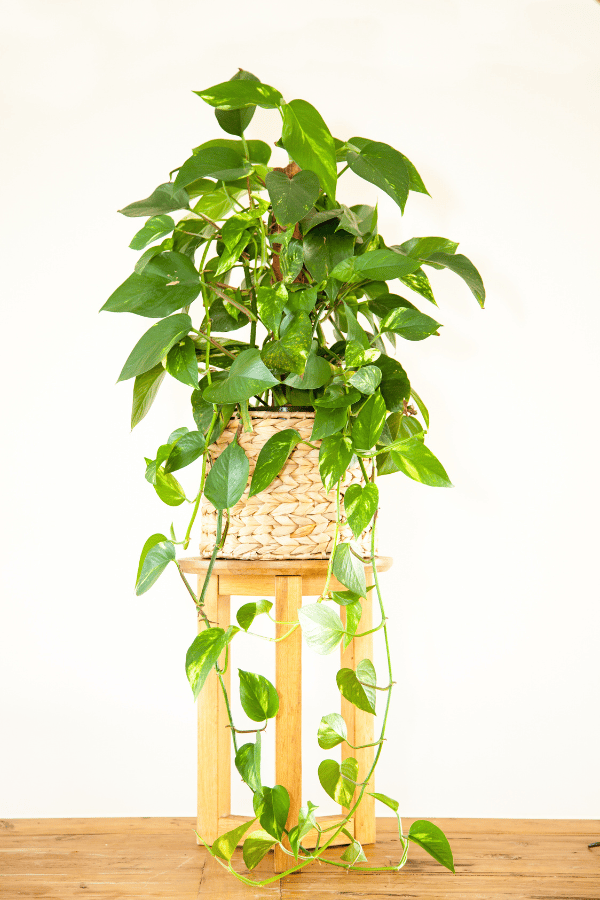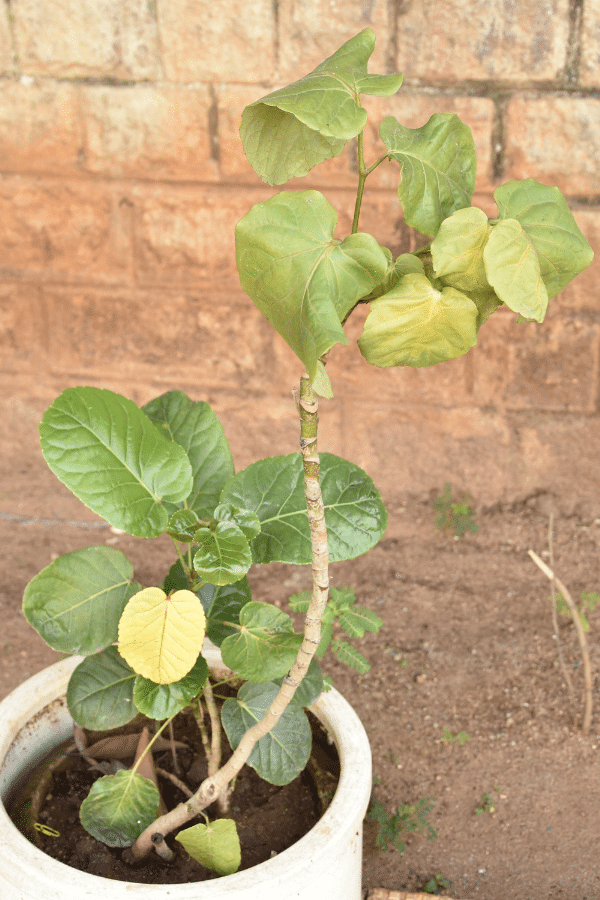Dischidia Ovata
Scientific Name: Dischidia Ovata
Common Name: Watermelon Dischidia
Dischidia Ovata care is an easy Dischidia to grow and care for. This plant will stay compact but will trail up to 8 feet in length with beautiful foliage. If you want a houseplant that won’t get too big but will trail and vine, a Watermelon Dischidia plant may be for you.
To give this Dischidia plant the best care, it requires equal parts of orchid bark, perlite, and cactus mix, keep soil moist by watering often, provide the plant with bright indirect light, and temperatures ranging from 60-85F with high humidity levels of over 70%.
Quick Care Overview
| Common Name | Watermelon Dischidia |
| Scientific Name | Dischidia Ovata |
| Family | Apocynaceae |
| Origin | Southeast Asia – China, India, Taiwan, New Guinea |
| Growth Rate | Slow |
| Identification | Ovate dark green leaves with white stripes resembling a watermelon |
| Height | Up to 8 feet in length |
| Soil | Equal parts orchid soil, perlite, cactus mix |
| Water | Keep soil moist, don’t let dry out |
| Temperature | 60-85F |
| Sunlight | Bright indirect light |
| Toxic to Cats & Dogs | No |
| Toxic to Humans | Mildly |
| Pests | Mostly resistant |
| Diseases | Root rot |
Below we will dive deep into this Dischidia Ovata care guide.

Dischidia Ovata History
Southeast Asian native, the Watermelon Dischidia, otherwise known as Dischidia Ovata has long green vines that have dark-green oval-shaped leaves with white stripes that look similar to the rind of a watermelon. This plant is not commonly well-known amongst houseplant lovers and doesn’t have as much popularity as other Hoya or Dischidia varieties. Nevertheless, this underdog of the indoor plant world deserves a little fame. Dischidias are far less common than their cousins, Hoya’s, although they are becoming more and more popular, as they are elegant and easy to grow. There are around 100 species of Dischidias and Dischidias are Epiphytes meaning they grow on other things, like other trees or plants around.
Dischidia Ovata Identification
Dischidia Ovata may be identified by its ovate, egg-shaped dark green leaves with white stripes that appear to resemble a watermelon rind on trailing vines.
Dischidia Ovata Growth Facts
This low-maintenance plant may be grown as either a hanging or climbing plant due to its trailing nature.
How Big Does a Dischidia Ovata Get?
While this plant’s height will not exceed around 2 inches, its creeping vines will grow to become several feet in length.

Dischidia Ovata Care
Dischidia Ovata is beginner-friendly and gorgeous. This easy-to-care-for plant will make an excellent addition to any room.
Dischidia Ovata Soil
Dischidia Ovata prefers to grow in a light, aerated, well-draining growing medium. To make your own potting mix, combine equal parts orchid bark, cactus mix, and perlite.
Dischidia Ovata Fertilizer
As Dischidia Ovata is not a heavy feeder, it doesn’t require much fertilizer. However, your plant will appreciate a feeding of an organic, liquid fertilizer monthly during the warm growing season to absorb nutrients. Ensure that you follow all label instructions. Do not feed during fall or winter.
Dischidia Ovata Watering
As this plant typically receives a lot of water in its natural environment, it is best to try to emulate these conditions when cultivated indoors. You should try to keep your Watermelon Dischidia’s soil moist but avoid letting it become overly saturated. This plant may tolerate a brief drought but should not be allowed to dry out completely. You should rewater your plant after the top inch of soil dries out. When watering your plant, ensure that it is given a good soak, drains thoroughly, and then let the soil dry before rewatering.
Dischidia Ovata Light Requirements
Your Dischidia Ovata will grow best in bright indirect light. In its natural environment, this plant will have dappled sunlight from through the forest canopy. Placing your Dischidia near a southern-facing window will suit this plant nicely. It is able to withstand some direct sun, but too much direct sun will cause leaf scorching.
Dischidia Ovata Temperature & Humidity
The best Dischidia Ovata care would be to grow in warm and in humid environments. Keeping this plant between 60 – 85F will be fine. Dischidia Ovata prefers to be grown in climates that are over 70% humidity but do not like having its leaves wet. So you should avoid misting this plant, as it may lead to fungal issues. Instead, a humidifier or pebble tray should be utilized to boost humidity.
Repotting Dischidia Ovata
As Dischidia Ovata is not a quick grower, it will not need to be repotted often. This plant actually enjoys being a bit rootbound, as this will prevent its roots from becoming overly saturated with water. You should repot your Dischidia Ovata every 2-3 years. Select a container that is 2 inches wider in diameter than the previous container. Ensure that the new container has drainage holes.
Dischidia Ovata Maintenance & Pruning
This Dischidia does not require pruning. However, you may periodically remove dead, discolored, or disease foliage.

Dischidia Ovata Propagation
Dischidia Ovata can be propagated through stem cuttings. Cuttings should be taken during spring or summer, during active growth. To propagate, take sterilized shears and cut the stem 1 inch below the leaf node. Ensure that each cutting taken has at least one leaf. Place the cutting into a vial of water and ensure that the water is changed every few days to avoid murkiness. Roots should develop within a few weeks. After the roots have become a couple of inches long, they should be transplanted into soil. Plant the cutting into fresh soil, water thoroughly, and place in indirect light.
Dischidia Ovata Toxicity
Considered non-toxic to humans and animals, this plant is safe to use around children and animals.
Toxicity to Humans
This Dischidia is considered non-toxic to humans and is safe to have around small children. However, the sap that this Dischidia oozes when injured may cause contact dermatitis so be sure to wash hands after coming into contact with this plant.
Toxicity to Cats & Dogs
This plant is not considered toxic to animals and is safe for animals to be around.
Dischidia Ovata Problems
Dischidia Ovata Leaves Turning Yellow
Leaves of Dischidia Ovata will often turn yellow due to overwatering. Be sure to set a strict watering schedule that will allow the growth of a healthy plant.
Dischidia Ovata Leaves Turning Brown
The foliage of the Watermelon Dischidia may turn brown due to fungal disease or from too much intense direct sunlight.
Dischidia Ovata Diseases
The most common plant disease issue to affect Dischidia Ovata are fungal diseases related to overwatering.
Dischidia Ovata Pests
Dischidia Ovata is considered pest-resistant and is not commonly attacked by indoor plant pests. However, it is not entirely immune. Therefore, look over your Dischidia Ovata periodically to ensure that there are no signs of infestation.
OTHER RESOURCES You May Like:
FAQ
Is Dischidia Watermelon a Hoya?
Dischidia Watermelon is a cousin of Hoya’s, however, they are not the same.

